Hello everyone and welcome to another mountain chicken blog! This week I sat down with our colleague and good friend Lloydie, in order to find out what inspires him as a conservationist, how he got to where he is today and to share his insight on how the project is going so far. As Forestry Technician in Montserrat’s Department of Environment, Lloydie has been working tirelessly on the MCRP since its very beginning and so he is one of our go-to conservationists for all things frog. Lloydie’s expertise and dedication has undoubtably played a huge part in propelling the project forward, so without further ado, here is Lloydie’s story, which we hope will inspire future conservationists to follow in his footsteps!
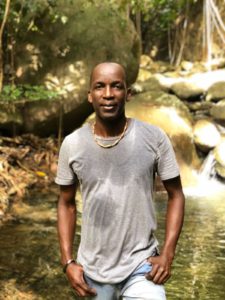 I’ve had a passion for wildlife and conservation ever since I was a boy. As we say here, I am from the country. I grew up in the countryside so I’ve always loved animals, birds especially. I knew a lot of their names growing up and the scientific names I learnt later on when I started doing this work. I was in the forest a lot because my grandparents did farming in the hills, which I often helped them with, so that interest of forestry and wildlife was always a part of me when growing up.
I’ve had a passion for wildlife and conservation ever since I was a boy. As we say here, I am from the country. I grew up in the countryside so I’ve always loved animals, birds especially. I knew a lot of their names growing up and the scientific names I learnt later on when I started doing this work. I was in the forest a lot because my grandparents did farming in the hills, which I often helped them with, so that interest of forestry and wildlife was always a part of me when growing up.
Before I even pursued my training overseas, the local guys working in Forestry at the time (Boatswain, Scriber, Gambi, John Martin and Big Lloyd) all gave me a wealth of training. Mappie was the man in terms of pinpointing different areas, because he knows the forest very well. Then in 1998, I got the opportunity to do a diploma course studying Forestry in Trinidad. This lasted 2 years and was a lot of hard work but very enjoyable. I also did lots of short courses within the Caribbean and attended many different meetings and workshops. Meeting experts who come over here to work also means we are still learning a lot off each other. My last training session was with Durrell- I did the Desman course for Endangered Species Management back in 2012, which really helped me to boost my knowledge as well too, which was great.
Day to day, my role includes a lot of supervision and training of other forestry staff and making sure the work gets done. I myself take part in a lot of the activities as well- I go out into the forest regularly doing patrols, censuses and monitoring of species, so I’m a part of the team and the workload. I’m very involved with the mountain chickens, taking part in the feeds, the management of the enclosure, the monthly health checks and the treefrog monitoring, so we can keep track of the disease-load in the area and see how well the mountain chickens are coping.
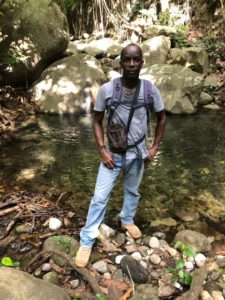 My motivation comes from being surrounded by amazing animals. Seeing them decline makes me want to know what can be done to save the species. That is really important to me and I want to be a part of that. Getting into this field, you learn a lot but when you see the local species and see them becoming endangered, it is difficult. Back in 1996 when the volcano erupted, we started doing intense work mainly on the mountain chicken and the Montserrat oriole. We then moved onto other species like the galliwasp and also focused on local birds. For me, this is when the interest started to build even stronger because we were losing these animals rapidly and we needed to find ways to stop them becoming extinct.
My motivation comes from being surrounded by amazing animals. Seeing them decline makes me want to know what can be done to save the species. That is really important to me and I want to be a part of that. Getting into this field, you learn a lot but when you see the local species and see them becoming endangered, it is difficult. Back in 1996 when the volcano erupted, we started doing intense work mainly on the mountain chicken and the Montserrat oriole. We then moved onto other species like the galliwasp and also focused on local birds. For me, this is when the interest started to build even stronger because we were losing these animals rapidly and we needed to find ways to stop them becoming extinct.
When the volcano erupted, the orioles went through a really hard time. These birds nest on heliconia plants which are succulents, so when the heavy ash fell it damaged lots of nests and there was a very low survival rate when it came to breeding succession. So after the ash subsided a bit, we monitored them more closely using camera traps and found that another threat was that black rats and pearly eyed thrashers were predating on the nests. So we ended up trapping for rats and the oriole population bounced back, which was a real success. We do our annual bird surveys every year in April, in which we see better and better results each year. Seeing this kind of progress keeps me motivated.
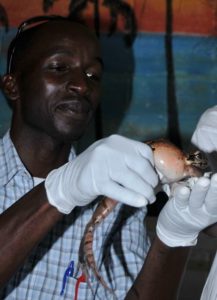
Amphibians are a particularly difficult group to deal with, as chytrid lives wherever there is moisture, so you can’t eradicate it easily. So now our job is to see what kind of resistance these animals can come up with so they can be back out in the forest again. The four releases we did before taught us a lot and lay the groundwork for where we are today with the semi-wild enclosure. After we’d done the releases, we had to use a radiotracking system to find the frogs again, which meant being out in the forest late at night, often from midnight until 5:00 in the morning and then doing early morning surveys to find the ones we couldn’t find at night.
This all lead us to where we are today and I am feeling positive that one day we will find a solution for this. We’ve been using the semi-wild enclosure for almost a year now and hopefully, using the results from this, we could do similar things in other areas of the forest, maybe in the Centre Hills. Hopefully these frogs would gradually start to breed and we could slowly release them back into the wild knowing that they have developed this resistance to chytrid fungus.
We had two frogs from the original population that lasted for years after the other frogs had died- one female and one male and we brought them back together. From then we’ve seen them probably once or twice. We haven’t seen them for nearly two years now but my hopes are still high that they’re there and breeding well. Our timing might be off whilst we’re looking for them at the moment but once the breeding season has started and they begin calling in April, we will go back and check and hopefully this time we will hear or see something. It was a similar situation in Dominica and the population bounced right back in the wild without people having to treat them. I’m hoping that’s the case here in Montserrat too.
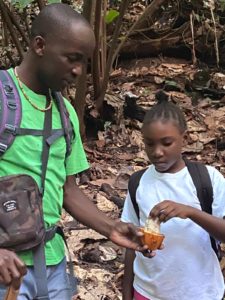 If I were to give advice to aspiring conservationists, I’d say it’s very important to have a natural interest. That’s something I’ve learnt. It can be a very tough area to work in- there is a lot of waking up early, late nights, long hikes and taking data. Some people won’t like handling the frogs or changing over heavy batteries, but it’s all part of the role. So you must have that general interest or you won’t be motivated to do the hard work. Like I said before, it was in me from when I was young and it didn’t go away when I had to do what I had to do. So if we want to find young conservationists now they need to be keen.
If I were to give advice to aspiring conservationists, I’d say it’s very important to have a natural interest. That’s something I’ve learnt. It can be a very tough area to work in- there is a lot of waking up early, late nights, long hikes and taking data. Some people won’t like handling the frogs or changing over heavy batteries, but it’s all part of the role. So you must have that general interest or you won’t be motivated to do the hard work. Like I said before, it was in me from when I was young and it didn’t go away when I had to do what I had to do. So if we want to find young conservationists now they need to be keen.
For instance my son- he has that general interest because he’s been working with the mountain chickens since he was small. I took him out in the forest, I took him for hikes, so he has an interest in forestry, conservation and biodiversity. And he learnt the skills- he can catch tree frogs, he can swab. If he’s at school and I tell him “we’re going for a hike after school” that’s something really exciting for him. He jumps to get ready- “I’m coming home, let me get my clothes, let’s go!” He always inspires me because he always says that he knows when there are school holidays, he will be here with me no matter where I’m going out in the forest. He loves that so much- maybe it’s in his bloodline!
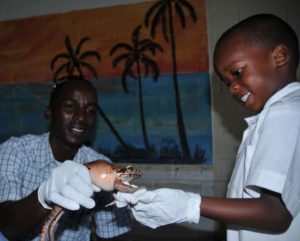
This is a job that I love because of the balance. Some people stress out about office work but not all of this work is in the office- you get out into the field too. You can be having a bad day in the office today but you know that tomorrow you’ll be out in the forest. You’ll be in a different atmosphere and that is refreshing.


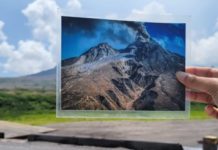
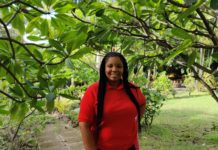
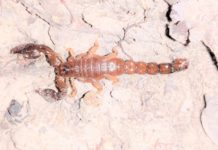



Really inspiring story. I loved reading it.
Such an inspiration to read about Lloydie and his enthusiasm and passion for his job!